It wasn’t long ago (let’s say in the middle of the last century) that European wine snobs, as well as well-heeled Americans, scoffed at wines produced in America. All this has changed in recent times, though, with some of the best wines in the world coming out of California, Oregon, and Washington. Winemaking has become big business in the western U.S., thus the competition is fierce, especially in the current marketplace where consumers are requesting more affordable wines. Here’s a look at a few newer wineries that are turning out wonderful wines, some of which won’t break the bank.
1) Flying Trout Wines
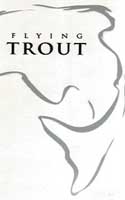 |
In a state that has more than 600 wineries, it’s imperative that a small boutique winery makes impeccable wines in order to compete with its larger competition. With that said, Flying Trout Wines (based in Walla Walla, Washington) is easily hanging with the big boys when it comes to putting out high-quality wines. Winemaker-owner Ashley Trout, who is only 28 years old, specializes in Malbecs and Torrontes, which might explain why she spends four months a year making wine in Mendoza, Argentina–the best place in the world to grow Malbec grapes. (Yes, she squeezes grapes in two hemispheres.) Besides Malbecs and Torrontes, Flying Trout also produces Syrah and Sangiovese. Keep your eye out for wines from this hot, new winery, which has a tasting room in downtown Walla Walla. But you better buy quickly because Flying Trout only turns out 1000 cases a year.
2) Dusted Valley Vintners
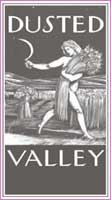 |
Dusted Valley Vintners is another Walla Walla Valley winery that’s making a splash in Washington’s wine scene. Owners-winemakers Chad Johnson and Corey Braunel, along with their wives, who happen to be sisters, run this up-and-coming winery, specializing in Rhone varietals. Dusted Valley produced its first vintages in 2003. Since then, they have started a second label, Boomtown, which offers excellent value-priced wines such as Cabernet Sauvignon, Pinot Gris, Syrah, and unoaked Chardonnay, to name a few. The higher end wines are under the Dusted Valley label. These include Viognier, Chardonnay, Cabernet Sauvignon, Malbec, and a couple of Syrah reserves. The winery, which produces more than 15,000 cases a year, recently opened a new tasting room in Woodinville, Wash.–west of the Cascade Mountains from Walla Walla. Dusted Valley also has a small tasting room at the winery, in eastern Washington.
3) Bent Creek Winery
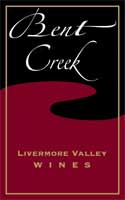 |
California is still king when it comes to U.S. wine country, as evidenced by the more than 1000 wineries that operate within the Golden State, and there seems to be new ones popping up everyday. Bent Creek Winery, located in Livermore Valley, a few miles east of San Francisco, has been producing some extremely drinkable wines since it debuted in 2002. Co-owners Pat and Tom Heineman first planted Syrah vines in 1997, sourcing the grapes to nearby wineries, before branching out into the winemaking realm. Livermore Valley is one of the oldest wine regions in the state. Bent Creek Winery specializes in Syrah, Petite Syrah, Sauvignon Blanc, Cabernet Sauvignon, Chardonnay, and ruby-style port. The tasting room is located at the winery near Livermore.
4) Whalebone Vineyard
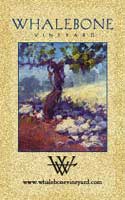 |
This relatively new winery gets its name from the ancient seabed that comprises the rolling hills of Adelaida–just west of Paso Robles, the third-largest wine region in California. The Paso Robles AVA (American Viticultural Area) is known for its robust Zinfandel wines. Most wineries in this area make big Zins, and Whalebone Vineyard is no exception. Besides Zinfandel, Whalebone also produces Cabernet Sauvignon, Syrah, and a fruit-forward Cab blend called “Bob Wine.” Owners Bob and Janalyn Simpson have been growing grapes since 1989, but they didn’t start making wine (under their own label) until 2001. Whalebone is located on scenic grounds, with a “tasting barn” as the focal point. Expect to hear more about this winery in the coming years.
5) Cass Winery
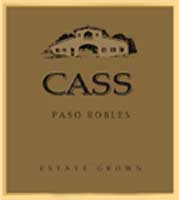 |
Cass Vineyards and Winery is another Paso Robles area winery that’s earning an ardent following. But, surprisingly, they don’t produce Zinfandel–the winery instead focuses on Rhone varietals. Cass is a limited production winery. So, expect to find small lots of Viognier, Roussanne, Syrah, Cabernet Sauvignon, Cabernet Franc, and Grenache–all of which are estate wines. (Estate in wine lingo means that the wines are made from grapes grown in the winery’s own vineyards.) Besides a spacious tasting room, Cass Winery also has a café, bed & breakfast, and creamery.
6) Anne Amie Vineyards
 |
Oregon is home to more than 300 wineries, most of which are located in picturesque Willamette Valley. Pinot Noir is the chosen grape for this wine region. Most wineries in Willamette Valley make Pinot Noir and Pinot Gris–two Burgundian varietals. Anne Amie Vineyards is a newer winery that’s starting to get much press as of lately. Located in the Yamhill-Carlton district of Willamette Valley (near the Chehalem Mountains), this winery has been turning out wines for nine or so years, primarily Pinot Noir, Pinot Blanc, and Pinot Gris. But it’s important to note that the vines at this small winery aren’t new; Dr. Robert Pamplin purchased Chateau Benoit Winery in 1999. Since then, Pamplin has hired winemaker Thomas Houseman and grape-grower Jason Tosch to take care of business. You can find these Burgundian-inspired wines at the winery’s tasting room, as well as at area wine shops and on wine lists in the Portland area.
7) Efeste Wines
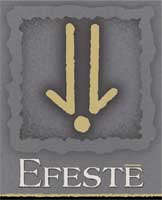 |
Efeste Wines started out as simply as some guy making wine in his garage. Co-owner Daniel Ferrelli turned a hobby into a profession in 2004 after his son-in-law, and other investors, talked him into producing a line of wines. This Washington winery has a penchant for Australian-influenced wines, as evidenced by its mineral-dry Riesling, Syrah (Shiraz), Cabernet Sauvignon, and Sauvignon Blanc–made by winemaker Brennon Leighton. Efeste believes in making small lots of wine, with fruit grown in various Columbia Valley locations–Yakima Valley, Red Mountain, etc… Check out the winery’s tasting room in Woodinville.
8) Cinder
Last but not least, Melanie Krause in southwest Idaho, of all places, is making some of the best wines in the Northwest. The Gem State recently received its first government-designated wine region, the Snake River Valley AVA–a big chunk of high desert plain. But most of the wines that come out of this burgeoning region still need fine-tuning, to say the least. There are a handful of good winemakers in Idaho, though, turning out decent wines–Krause being one of them. This young winemaker, who is in her early thirties, cut her teeth working at Chateau Ste. Michelle in Washington before moving back to her home state of Idaho. Cinder, her label that’s named after the distinctive cinder cones in the area, produces several remarkable wines, including dry rosé, Syrah, Viognier, and a Cabernet Sauvignon/Merlot blend. Cinder belongs to the Urban Winemakers Cooperative in Boise, which has a tasting room.
We always want to be transparent and honest about our article content. From time to time, we may link to products and services that compensate us for the referral. This does not affect your cost, but it does help us fund future content for this site.
